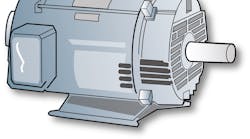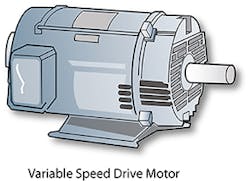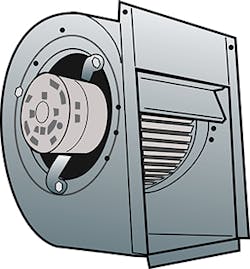While variable-speed blower motors have a variety of benefits, little attention has been given to the potential of these motors to become energy hogs. Let’s look at precautions you must take when setting up equipment using variable-speed motors. It’s the only way to assure you deliver the efficiency these blower motors promise.
Our Objective
I was testing in the field last week with a group of super-sharp HVAC professionals in Florida. We were measuring and diagnosing the performance of several HVAC systems. The contracting company was a first class outfit with a culture of installing high efficiency equipment. They were looking for better ways to serve their customers.
The Scenario
We found a terrific looking system in the garage of a gorgeous eight-year-old home. It was a three-year-old split system heat pump with a matching air handler.
The only complaints from the homeowner were in regard to discomfort in the home office and higher than expected utility bills. The old equipment had been replaced after only five years because of excessive utility costs. They expected much lower bills after installing new 18-SEER equipment.
After all, from what they understood, the 18-SEER equipment should be 40% more efficient than the 13-SEER equipment they replaced. This assumption, based on laboratory testing, is the most frequently repeated falsehood HVAC salespeople continue to perpetrate.
The system’s nominal capacity was five tons. The fan rating was a maximum total external static pressure of .80” w.c. The manufacturer’s engineering data for the equipment was found on the manufacturer’s website and used to compare to field measurements.
The Test Data
The system was tested in cooling mode at an 84F outdoor temperature.
System total external static pressure was measured at 1.1-in. w.c.
Equipment airflow was measured at 2030 cfm compared to the system design airflow of 2000 cfm. We were quite impressed with the fan airflow under these out-of-specification conditions. We had quite a discussion, wagering on how much longer the blower motor would continue to operate under these conditions.
Using an air balancing hood in accordance to ASHRAE 111, we measured system airflow at the supply registers of 1920 cfm and the airflow at the return grille of 1865 cfm.
Aside from some excessive duct temperature gains in the system, which explained the discomfort in the home office, the system appeared to be performing well. However, the homeowner’s concern about excessive utility costs remained. If the system seemed to be functioning well, what could be causing the high utility bills?
Killer Diagnostics
After evaluating our test data above, the only out-of-spec number continuing to raise a concern was the system operating static pressure. We looked a little deeper.
Back online we discovered the fan-rated watts for this air handler was only 350. We measured the operating watts of the blower motor in the field at 1050. The watt consumption of the variable-speed fan motor was three times the amount the fan was rated to consume when in the laboratory.
Additional research uncovered AHRI only requires a system be tested at .20” w.c. in the laboratory whenThe additional watt consumption of the blower motor actually lowered the estimated field measured efficiency of this system from 18 SEER to 12.5 SEER.
In other words, the new 18-SEER system was operating at a lower efficiency than the old constant-speed system it replaced.
Hopefully, you’ll never have to explain this to one of your customers after you installed new replacement equipment.
How to Fix the Problem
We began measuring pressure drops over different components of the system to isolate the cause of airflow resistance causing the excessive fan watt draw. Our goal was to pinpoint restrictions, then remove them from the system, if possible.
We discovered a factory filter with a pressure drop of .58” w.c. The filter resistance to airflow was nearly 300% of the filter pressure drop found in well operating systems.
We found the fix was to remove the existing filter and installing a less restrictive one.
This performance-deteriorating deficiency could be fixed by either installing a less restrictive return air grille, or adding more return grille surface area.
Bottom Line
The benefits of variable-speed fans include improved airflow, better dehumidification, zoning, and increased efficiency, but only if the system -- as a whole -- is built to allow the fan operation to match laboratory rated conditions. The same principles apply to equipment-rated efficiency.
Unless you design, install, commission, and verify a system to assure it matches the manufacturer’s specifications, you need to think again before you sell a system based on the rating of a yellow sticker.
Be advised, if you fail to do so, there are more trained and certified technicians capable of blowing the whistle on you and harvesting the poorly performing work you leave behind.
Rob “Doc” Falke serves the industry as president of National Comfort Institute an HVAC based training company and membership organization. If you're an HVAC contractor or technician interested in a free test procedure to assess filter restriction, contact Doc at [email protected] or call him at 800-633-7058. Go to NCI’s website at nationalcomfortinstitute.com for free information, articles and downloads.











